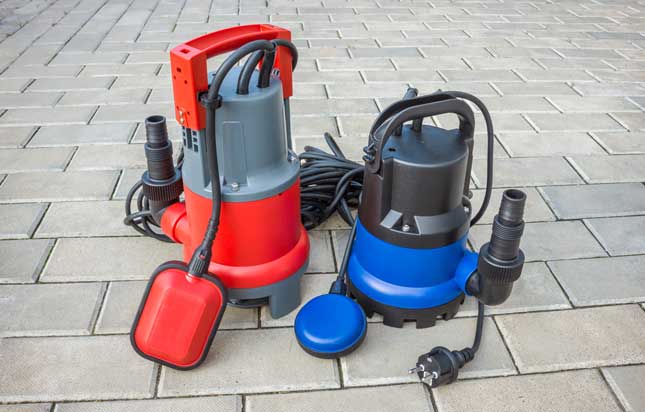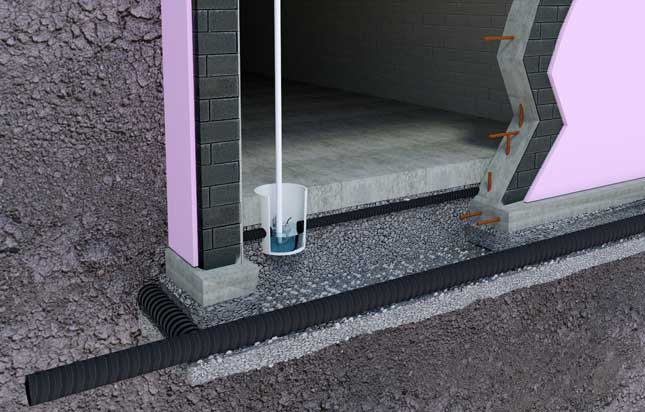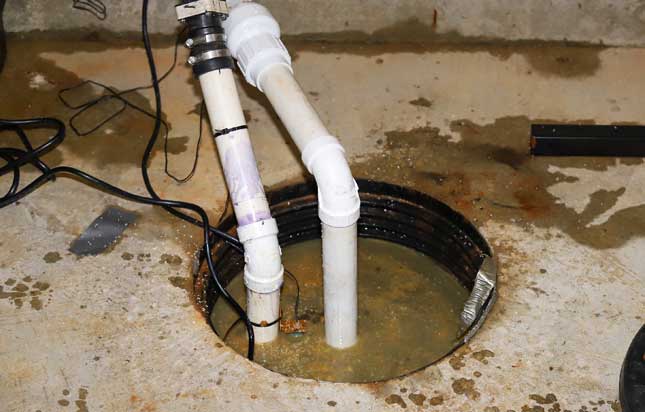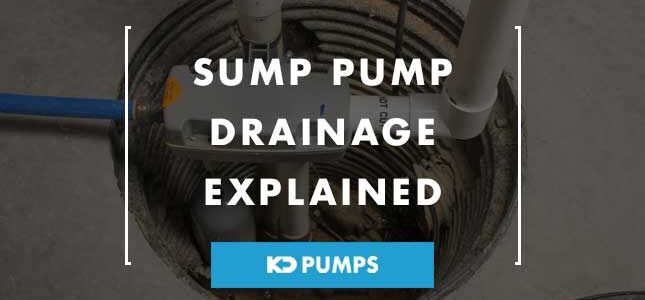Sump Pump Drainage Explained
Basement flooding problems should be avoided at all costs, as they are both highly destructive as well as considerably expensive to remedy.
By having a sump pump system professionally installed, you’ll get peace of mind that if any flooding were to occur, all excess water will be diverted accordingly.
In this article, we explain the processes behind sump pumps and when set up correctly, how they remove unwanted flood water effectively.
Article Chapters
What is a Sump Pump?

Image credit: Shutterstock
A sump pump is used to remove water that accumulates in a sump basin.
The sump basin is essentially a cylindrically-shaped chamber cut into the ground where excess water collects.
This pump is commonly installed in basements, especially when sat below the water table.
The sump forms an integral part of a basement’s water management system.
Without it, there would be concerns that flooding could occur.
The sump pump works in conjunction with the basement’s drainage channels, so that any water ingress problems can be dealt with effectively.
During heavy rain or in cases of high water table levels, water could start to enter the basement.
But with such a system it will be collected through the perimeter drains, where the water will be funneled into the sump basin.
The sump pump will then remove the water that’s collected to the nearest drainage point, where it will not pose any problems to the property.
Sump pumps are generally made from metal or plastic.
They are often submerged into the sump chamber.
When activated by the float, the water will then start to be pumped out of the sump basin.
Some sump pumps also have an integrated alarm system to alert you when water levels have risen too high.
Certain sump pumps come with a battery back-up, so in case of a power failure, they will still continue to operate as normal.
Sump Pump Discharge Line Features

Image credit: Shutterstock
The sump pump’s discharge line design is of great importance as it prevents clogs from forming.
This ensures the sump pump system works at optimum performance.
Moreover, the water from the sump pump discharge line will need to be dispersed to the best possible location, otherwise it could lead to various problems.
Should the water be discharged the wrong way, the excess water could end up finding its way back into the basement.
Hence, it’s important that the drainage system’s discharge lines are appropriately designed and maintained.
Such a system comprises a number of features and parts, including:
Sump Pump Check Valve
The sump pump check valve is a part of the discharge system, whose main purpose is to pump the water into the discharge line.
This ensures the water will not make its way back into the sump pit.
Every time the sump pump is switched off, it will have to pump the water out again if it were not for the presence of the check valve.
Indeed, should the sump pump check valve fail, there would be an increase in the sump pump’s usage.
This will lead to unnecessary wear and tear, and eventually the pump could break down.
Thus, the sump pump check valve should be inspected regularly to ensure it is fully operational, as it contributes to the efficiency and lifespan of the sump pump.
Freeze Protecting Discharge Lines
During colder winter months, discharge lines can become frozen.
If this occurs, the whole sump pump system will stop operating.
This is because any excess water will be unable to find an exit from the system, and eventually lead to flooding.
For this reason, it’s recommended to install discharge line fittings which reduce the chances of freezing.
These fittings also comprise holes on the top so that any excess water can seep out of the basement.
Discharge Line Openings
The discharge line openings are highly susceptible to becoming clogged due to the accumulation of dirt and other debris.
When this occurs, the sump pump system will stop functioning, leading to basement flooding.
To avoid this, the discharge line openings are fitted with a grate so that dirt can be kept at bay and clogging can be reduced considerably.
How Sump Pump Perimeter Drainage Channels Work

Image credit: Shutterstock
The perimeter drainage channels are installed around the basement boundary.
These channels comprise numerous holes, so that the water from the cavity drain membrane can enter the channel.
The water that is collected is then dispersed into the sump chamber.
Thereafter, the water will be pumped out to an evacuation point away from the basement.
These perimeter drainage channels are very beneficial, especially in cases when other parts of the system fail.
These channels help to relieve the pressure from the groundwater, so that ultimately the basement remains dry.
Why Professional Installation Counts
A professionally installed basement flood prevention system is very important as it gives you the peace of mind that the basement is safeguarded from water ingress.
The sump pump and the perimeter drainage channels are thus best left in the hands of experienced professionals, both for their installation, as well as subsequent regular sump pump maintenance.
Should the system be designed and installed incorrectly, various problems can start to occur.
Excess water could overwhelm the sump system and your basement could flood, leading to irreparable damages.
Needless to say, this will lead to a great deal of inconvenience as well as avoidable costs to put right.
Conclusion
It’s always advisable to contact a professional pump specialist when it comes to choosing the most suitable sump pump system for your basement.
The various features of the sump pump discharge lines are important to ensure that the drainage system works efficiently.
In most cases, that’s your best line of defense against flooding and the most suitable waterproofing solution for your basement.


Comments are closed.